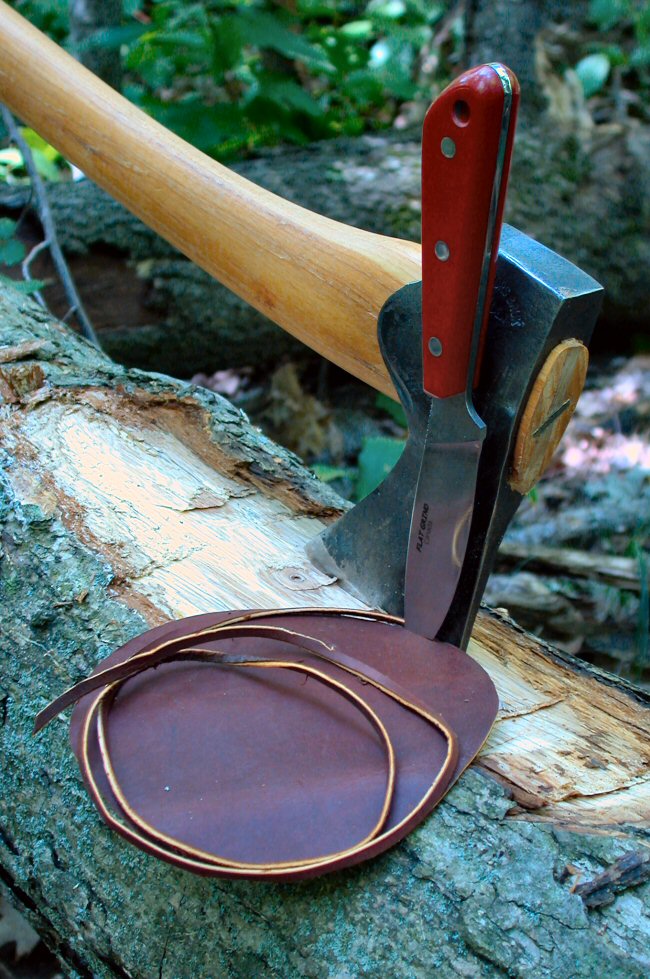You might be surprised at what country people did with their blades around where I grew up in West Virginia (more than a few years ago).
First of all, you could say people did not baby their tools. Axes were frequently left outside at the woodpile. But those folks were all widows not looking too far into the future and, besides, they only used them to split wood, never to cut much of anything. I don't recall people having much in the way of knives beyond a pocket knife. There wasn't much hunting then. However, mowing sythes were still common, even if they weren't used to cut large acreage. There were various sorts of blades, depending on what you wanted to cut. Now an interesting thing about sythe blades is how thin they are. They hold up fairly well, provided the user holds up his end and doesn't run the blade into the ground or attempt to slice stones, which grew very well around there. A significant point, though, is that the person using a sythe always carried a sharpening stone with him and he would run it over the blade a few times, oh, maybe as often once every half-hour and maybe more often. I suspect it was as much for the break from mowing as for sharpening.
I haven't seen anyone using a sythe since I left home.
These days I have a nice collection of not very nice knives, none costing over $50, shipping included. In the woods, camping, I seem to find ways to do without requiring a knive very often. But that is evading the issue. When I want the knive, it needs to be sharp. It is a little irritating and a little embarassing to find your pocket knife has trouble cutting a 1/4-inch cord or slicing open a plastic package. Here at work a pocket knife is handy for opening boxes but that's about all.
Now my kitchen knives are another story. They also need to be sharp and they get used all the time. So I tend to use the sharpening steel almost every day just to touch up the blade. I couldn't tell you the first thing about angles or whatnot but I know it makes a huge difference in how they cut.
Another thing is, most of my knives are stainless. They might be harder to sharpen but it is easily worth it to me just to prevent rust. I don't have anything with a fancy finish of any sort.
Speaking of knives, I have noticed that my wife will always pick a different knive than I would to do the same chore. We are like that, I guess. As a matter of fact, there aren't two things I can think of that we do the same way. Different backgrounds, I guess. Anyway, she has managed to remove the serrations on a couple of paring knives by not using a cutting board on the tile countertop. I have only responded in the most subtle ways to attempt to correct her habits, so far with only slight success. Fortunately for me, she has never heard of this forum.
Sometimes you hear it said that a sharp knife is a safer knife. My own experience tends to suggest otherwise. I have suffered a few cuts now and then, assuredly from a sharp knife, but an even worse one when actually sharpening a knife. That was a flat-ground, not particularly sharp angle Finnish hunting knife, but it certainly had an efficient edge. Does anyone here use any cut-resistant gloves for handling blades, especially when sharpening them? I notice my local woodworking store has a selection, right next to the Mora woodcarving knives. I know that logging supply places have special gloves but they might be vibration-dampening gloves, rather than cut resistant gloves. They also have chain-saw safety chaps, for those of you that play with such things.
I have never attempted to shave anything with a knive but my father did that all the time. By the way, the photo of the ax and knive is excellent.

